Advances in human intracranial electroencephalography research, guidelines and good practices
- PMID: 35792291
- PMCID: PMC10190110
- DOI: 10.1016/j.neuroimage.2022.119438
Advances in human intracranial electroencephalography research, guidelines and good practices
Abstract
Since the second-half of the twentieth century, intracranial electroencephalography (iEEG), including both electrocorticography (ECoG) and stereo-electroencephalography (sEEG), has provided an intimate view into the human brain. At the interface between fundamental research and the clinic, iEEG provides both high temporal resolution and high spatial specificity but comes with constraints, such as the individual's tailored sparsity of electrode sampling. Over the years, researchers in neuroscience developed their practices to make the most of the iEEG approach. Here we offer a critical review of iEEG research practices in a didactic framework for newcomers, as well addressing issues encountered by proficient researchers. The scope is threefold: (i) review common practices in iEEG research, (ii) suggest potential guidelines for working with iEEG data and answer frequently asked questions based on the most widespread practices, and (iii) based on current neurophysiological knowledge and methodologies, pave the way to good practice standards in iEEG research. The organization of this paper follows the steps of iEEG data processing. The first section contextualizes iEEG data collection. The second section focuses on localization of intracranial electrodes. The third section highlights the main pre-processing steps. The fourth section presents iEEG signal analysis methods. The fifth section discusses statistical approaches. The sixth section draws some unique perspectives on iEEG research. Finally, to ensure a consistent nomenclature throughout the manuscript and to align with other guidelines, e.g., Brain Imaging Data Structure (BIDS) and the OHBM Committee on Best Practices in Data Analysis and Sharing (COBIDAS), we provide a glossary to disambiguate terms related to iEEG research.
Keywords: ECoG; Electrocorticogram; Good research practice; Intracranial recording in humans; Stereotactic electroencephalography; sEEG.
Copyright © 2022. Published by Elsevier Inc.
Figures






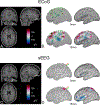
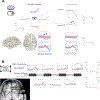
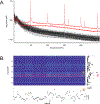
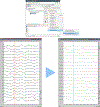

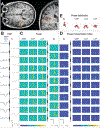


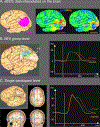
References
-
- Abramian D, Eklund A, 2019. Refacing: Reconstructing Anonymized Facial Features Using GANS, in: 2019 IEEE 16th International Symposium on Biomedical Imaging (ISBI 2019). Presented at the 2019 IEEE 16th International Symposium on Biomedical Imaging (ISBI), IEEE, Venice, Italy, pp. 1104–1108. 10.1109/ISBI.2019.8759515 - DOI
-
- Adhikari A, Sigurdsson T, Topiwala MA, Gordon JA, 2010. Cross-correlation of instantaneous amplitudes of field potential oscillations: a straightforward method to estimate the directionality and lag between brain areas. J. Neurosci. Methods 191, 191–200. 10.1016/j.jneumeth.2010.06.019 - DOI - PMC - PubMed

